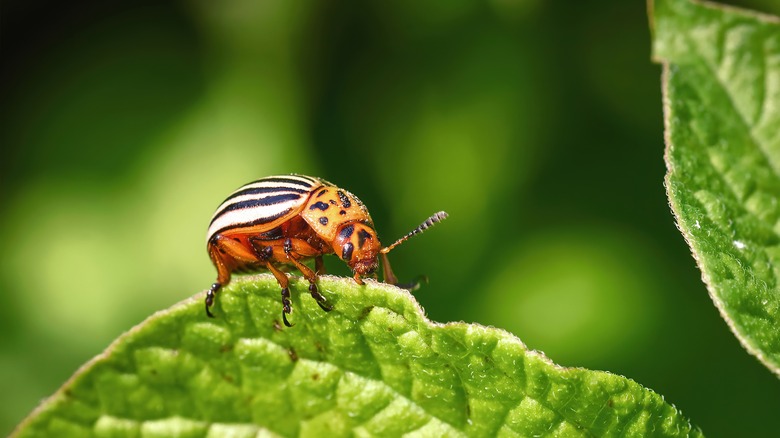In your pursuit of a pest-free garden, systemic insecticides promise an appealing solution. They enter the plant’s internal structure by subtly weaving through the root network, aiming to turn them into inhospitable hosts for any pest that takes a bite. The concept is simple: as pests feed on the treated plants, they ingest the insecticide, which disrupts their nervous systems, effectively eliminating them. This method boasts precision in targeting pests at a systemic level, ensuring that the entire plant becomes a guardian against invaders.
Yet, despite their advanced design, these potent chemicals often miss the mark. The reality is that several factors determine their effectiveness — factors such as how much and which parts of the plant the pests consume and whether the plant can adequately distribute the insecticide throughout its system. Furthermore, on the one hand, they offer a formidable defense against a variety of pests; on the other, they bring with them a suite of risks that can upset the delicate balance of your garden ecosystem. The indiscriminate nature of this toxic defense means good insects can become unintended victims, too.
As the narrative unfolds, you’ll see why a blanket reliance on systemic insecticides could be misguided. It’s important to approach garden pest control with a strategy that considers the varied effectiveness of these treatments. Balancing the use of systemic insecticides with other methods may be the key to maintaining a healthy, vibrant yard.
The slow-acting nature and non-selective impact

When you apply systemic insecticides, patience is required. These chemicals take time to be absorbed and distributed through the plant’s system, meaning they won’t eliminate pests immediately. This slow process can be less than ideal if you’re facing an infestation that demands quick action. There’s also the matter of dosage and distribution. Not all parts of your plant will carry the same insecticide concentration. Some pests may nibble on less saturated areas, thereby surviving and continuing their lifecycle. Moreover, systemic insecticides require pests to feed on the plant to be effective. If the pest damages your plants in a different way, such as by boring into stems or fruit where the insecticide levels might be lower, the effectiveness can be further compromised.
More concerning, however, is the impact on non-target insects, notably pollinators like bees. Some insecticides, like neonicotinoids, have garnered significant attention due to their potency and persistence since they are substantially more toxic to bees. The ramifications for bee populations and the pollination services they provide are serious. To mitigate these impacts, consider integrated pest management (IPM) strategies that favor more eco-friendly pest control methods over chemical ones. Introducing or encouraging natural predators and planting pest-resistant varieties can reduce reliance on systemic insecticides. When chemical intervention is necessary, selective use and precise application can minimize unintended harm. Timely application, specifically during periods when pollinators are less active, and adhering to recommended dosages can also reduce the risk to beneficial insects.
Water solubility and environmental persistence

The very quality that allows plants to absorb systemic insecticides — their water solubility — also poses a serious environmental risk. These chemicals can be transported away through irrigation run-off or rainfall before the plants fully absorb them. This movement can contaminate groundwater and nearby waterways, potentially affecting water quality. This downside underscores the importance of careful application. Controlling this movement is a delicate task. You can’t always predict where water will flow in your garden, but you can take steps to minimize this unpredictable travel. You’ll first need to understand the watering needs of your plants to prevent over-saturation. In addition, aim to apply systemic insecticides during dry periods only. Application is another factor. Try to incorporate them into the soil near the plant’s base to minimize their spread. It might also help to introduce buffer zones that can prevent run-off into water bodies. Additionally, soil amendment with organic matter can enhance soil’s ability to hold onto these chemicals and improve plant uptake.
All in all, balancing the use of systemic insecticides with these environmental factors requires attention to detail and an understanding of your garden’s ecosystem. You’ll want to think about the timing of application, the specific needs of your plants, and the potential for water movement in your soil. This way, you’re not just applying a product; you’re stewarding an environment, ensuring that the very solution you’re using to protect your plants doesn’t become a problem for the ecosystem as a whole.




